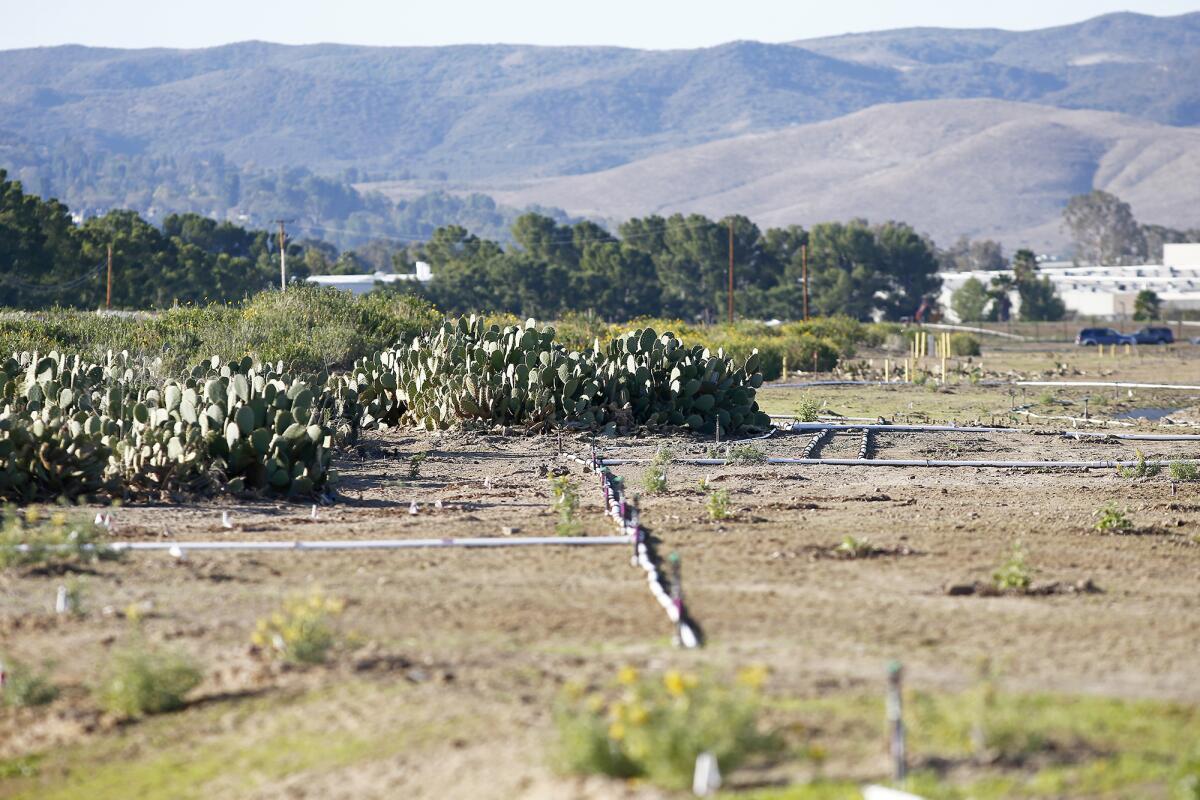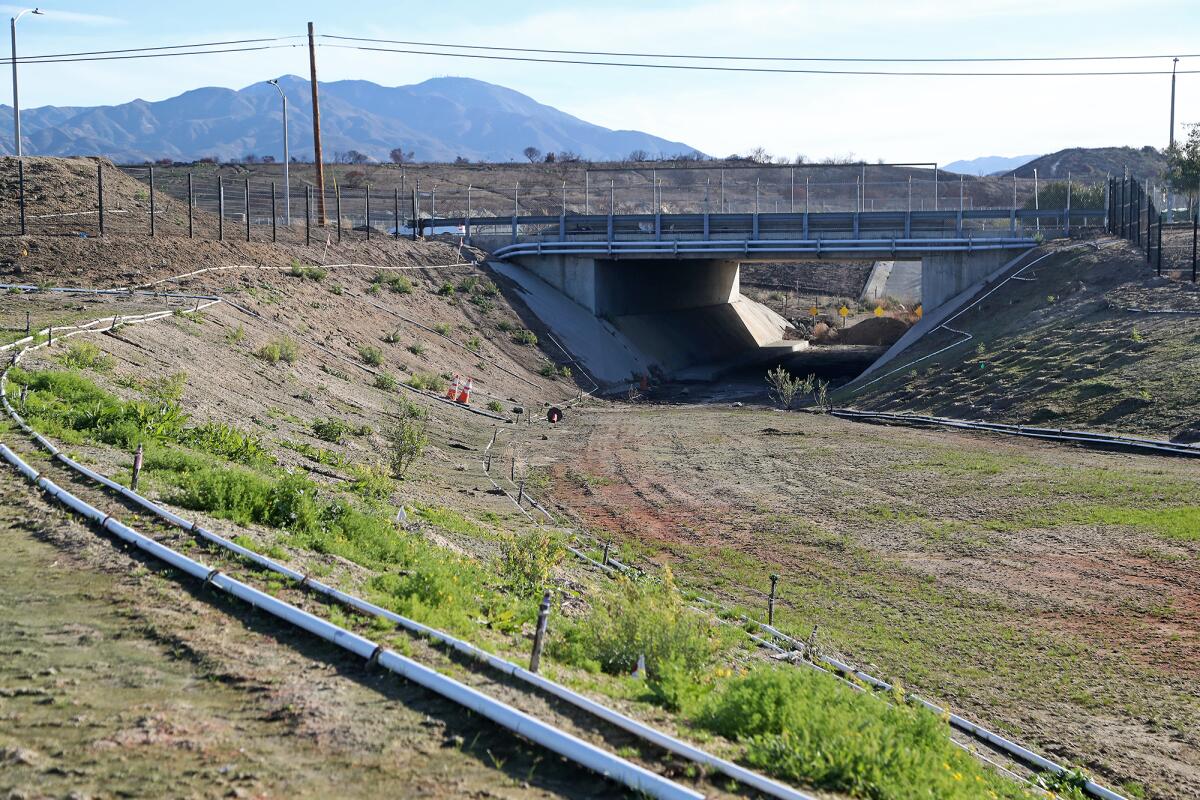Progress made on wildlife corridor connecting O.C. coast with Cleveland National Forest
During the Laguna Beach fire of 1993, many animals had difficulty retreating from the massive blaze due to a lack of open space.
About 20% of Orange County’s gnatcatchers, an endangered songbird, were killed in the fire, which caused devastating damage, burning 16,000 acres and hundreds of homes.
Then, in the wake of the fire, animals from the surrounding habitat could not access coastal areas to replenish their populations.
Nearly three decades later, some progress has been made on a wildlife corridor funded, designed and constructed by Great Park developer FivePoint Holdings. The company is working alongside the environmental group Laguna Greenbelt, which has fought for the corridor since the 1990s.
FivePoint has been working on restoring 2.5 miles of the 6-mile corridor since the project’s groundbreaking in early 2018. When finished, the corridor will connect the Cleveland National Forest with Orange County’s wild coastal terrains. The grounds were formerly used for agriculture and the Marine Corps Air Station El Toro golf course.
“Significant progress has been made toward connecting two of the largest open spaces in Orange County, which are vital to the well-being of wildlife that live and move throughout the area,” said FivePoint Chief Operating Officer Lynn Jochim. “We are grateful for our partnership with Laguna Greenbelt and the industry experts we have worked closely with to complete the connection between 20,000 acres of coastal chaparral and the Santa Ana Mountains. We remain dedicated to continued stewardship of the land and collaboration with our partners to finish this critical environmental link for Irvine, the region and generations to come.”

The corridor will encourage biological diversity among the animals that dwell in the coastal chaparral surrounding Laguna Beach, officials say. The gray fox, bobcat, coyote and various native birds are among the wildlife that will be able to travel between coastal habitat and the Santa Ana Mountains. More open space means more potential mates to encourage biodiversity.
“It’s crucial, particularly to the coastal wilderness area around Laguna Beach — if we’re cutting that off and essentially making an island from the rest of the region ... the animals that live in the wild along the coast are really going to suffer, because they need genetic diversity,” said Gabriela Worrel, outreach coordinator with Laguna Greenbelt.
Diversity is crucial in animal populations because it safeguards against singular catastrophic events. If animals are mating with family members and reintroducing the same traits into the collective genome, a single disease could wash through the population and wreak havoc.
Worrel said genetic testing has revealed that some of the animals living in the wilderness parks along the coast are showing signs of genetic degradation.
“Additionally, consider climate change and what’s happening with wildfires and how that’s going to increase,” Worrel said. “The best thing for nature is to have these escape routes that animals can use to go to another area when there’s a fire. And then it allows them to come back into the area as well when that disaster is over. So, those things are all crucial for maintaining our habitat on the coast.”

Laguna Greenbelt has contributed to a number of environmental successes in the county, including establishing the 22,000-acre greenbelt around Laguna Beach, Crystal Cove State Park and the 38,000-acre Nature Reserve of Orange County.
The city of Irvine, which owns the land where the wildlife corridor is being built, has reviewed the planning and construction documents and is monitoring the project’s progress.
In the last year and a half, FivePoint has planted 98% of the corridor’s vegetation, which includes more than 15,000 shrubs and plants, 24,000 cactuses and 4,500 trees. All irrigation lines have been installed; supplemental watering will be needed for the first few years as the infant vegetation grows. FivePoint has also sprayed 3.5 million square feet of hydroseed, which staves off erosion and encourages grass growth. About 60% of the needed fencing has been installed to keep people out of the area.
The project has faced some pandemic-related setbacks. It was difficult to get shipments of fencing at certain times over the past year, and crew availability has been a challenge.
Irvine spokeswoman Kristina Perrigoue said next steps for the project are “dependent on multiple variables and are still being evaluated.” Although the corridor was originally expected to be completed in mid-2019, Perrigoue said development is not moving slower than expected.
FivePoint has no estimate for when the work will be completed, a spokesman said: “This thing is moving at the pace that everybody expected, in the sense that there are a number of players involved, including wildlife agencies and others that need to check off on things as it progresses.”
He noted that more work needs to be done on a couple of “pinch points” where the corridor intersects with Barranca and Alton parkways.
“These are complex projects that involve engineering, science and a lot of input from different people, and the project is moving forward,” he said. “We’re, from our standpoint, very pleased with the progress that’s been made and where we are now, and I think we can certainly see the light at the end of the tunnel on this.”
Brazil writes for Times Community News.
More to Read
Sign up for Essential California
The most important California stories and recommendations in your inbox every morning.
You may occasionally receive promotional content from the Los Angeles Times.











